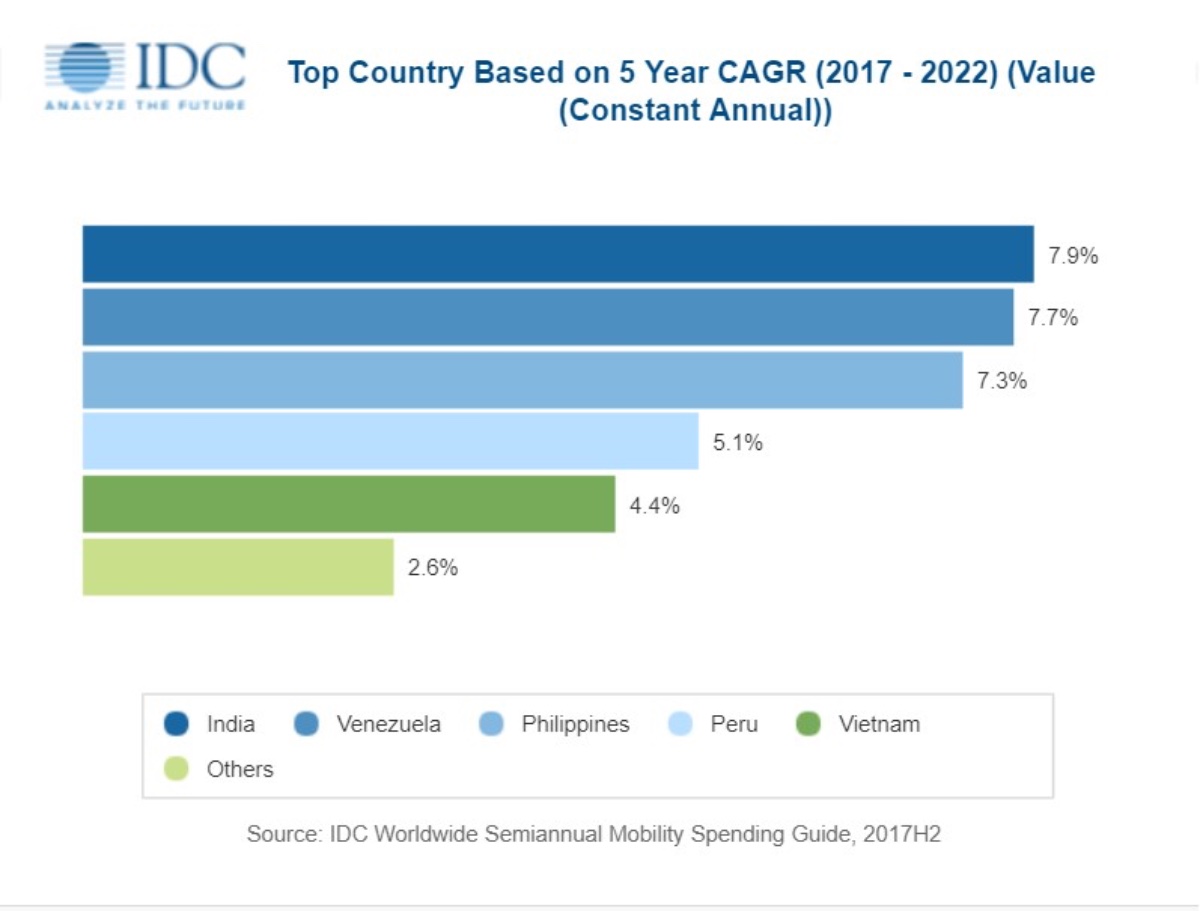Worldwide spending on mobility solutions is forecast to reach $1.8 trillion in 2022, according to a new update to the Worldwide Semiannual Mobility Spending Guide from International Data Corporation (IDC).
While annual growth will vary somewhat over the 2017-2022 forecast period, IDC expects the five-year compound annual growth rate (CAGR) will be 2.8%. Mobility spending in 2018 is forecast to be $1.63 trillion, according to the research group.
“These days, mobile technologies are an integral part of the work environment. The proliferation of devices – whether in the hands of customers, partners, or employees – is delivering unprecedented access to information, improved productivity and collaboration, and increased engagement for organizations,” says Jessica Goepfert, program vice president, Customer Insights & Analysis, IDC. “Even industries that are typically slow to adopt technologies, such as construction and personal and consumer services, are implementing mobile strategies. In consumer-centric industries such as retail and banking, mobility projects are focused on creating and delivering exceptional customer experiences with hopes of building loyalty and trust. Those segments with a more operational focus, like manufacturing and construction, appreciate the efficiency and productivity gains from mobile solutions.”
Consumers will provide more than 70% of worldwide mobility spending throughout the forecast with slightly more than half of this amount going toward mobile connectivity services and most of the remainder going toward devices, mainly smartphones. Growth in the consumer sector will be variable but positive with a five-year CAGR of 2.2%.
Professional services industry is forecast be the worldwide industry leader for mobility spending in 2018 at $44.9 billion, followed closely by the banking industry at $44.5 billion. Discrete manufacturing, retail, and education will round out the top five industries this year.
Like the consumer sector, more than half of industry mobility spending (and nearly three quarters for the professional services industry) will go to connectivity services and enterprise mobility services. While mobile devices will be the second largest area of spending, most industries will also make considerable investments in mobile applications and mobile application development platforms.
The industries that will see the fastest growth in mobility spending over the forecast period are discrete manufacturing and utilities (each with a 5.9% CAGR), telecommunications (5.8% CAGR), and process manufacturing (5.7% CAGR). Healthcare, with a 5.0% CAGR, is forecast to move ahead of education to become the fifth largest industry by 2022.
“While the overall mobility market matures, with less device and platform differentiation, the use cases for mobile devices and apps in the enterprise continue to expand,” says Phil Hochmuth, program director, Enterprise Mobility at IDC. “Business are moving beyond using mobile devices for basic communications and productivity apps to more advanced, task- and industry-specific apps and workloads.”
From a technology perspective, mobility services will be the largest area of spending throughout the 2017-2022 forecast, surpassing $1 trillion in 2021. Hardware will be the second largest technology category with spending forecast to reach $738 billion in 2022. Despite being the smallest technology category, software will see strong spending growth (12.9% CAGR) over the five-year forecast.
Mobile enterprise applications will be the largest category of mobile software spending, growing to nearly $8.0 billion in 2022. Businesses will also increase their development efforts with mobile application development platforms experiencing a five-year CAGR of 15.1%, making it the fastest growing technology category overall. However, all four software categories, including mobile enterprise security and enterprise mobility management, are forecast to deliver double-digit five-year CAGRs.
From a company size perspective, large and very large businesses (500-999 employees and 1000+ employees, respectively) combined will account for nearly $197 billion in mobility spending in 2018, growing to more than $245 billion in 2022. The small business sector (10-99 employees) will grow to more than $100 billion in 2022 while medium size businesses (100-499 employees) will surpass $94 billion in 2022. The small office market (1-9 employees) will spend more than $70 billion on mobility solutions in 2022.

